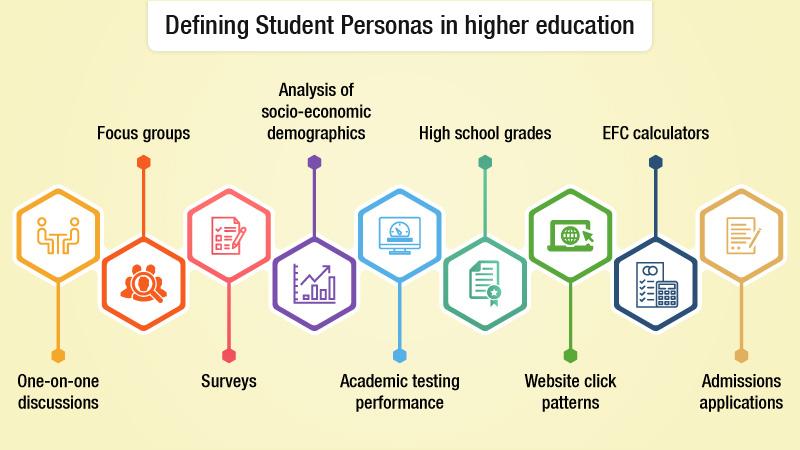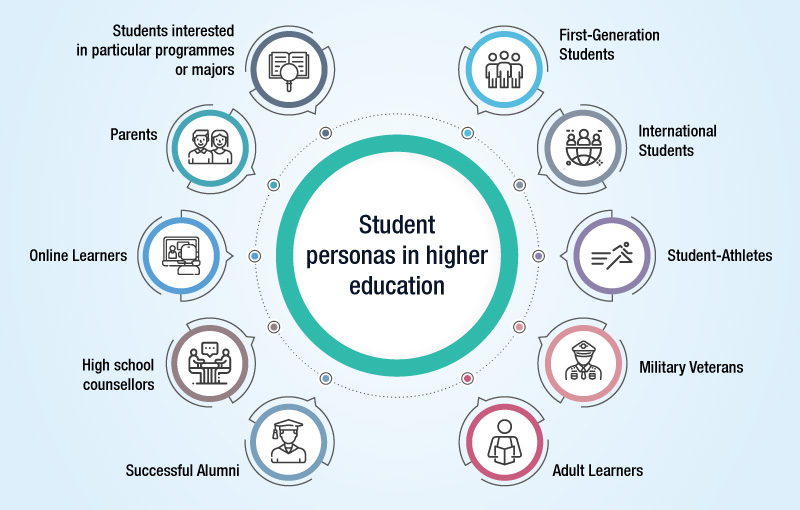In recent years, the use of personas has become a common practise embraced by leading companies in the corporate sector. Like the corporate sector, Higher Education can benefit from the use of personas to facilitate customer acquisition – in this case, student acquisition – as part of recruitment, marketing, and enrolment initiatives. The blog details the different personas in higher education and how identifying them strengthens the overall marketing efforts of your institution.
Colleges and universities also have opportunities to use personas in contexts beyond traditional new-customer/student marketing. Persona-based messaging can be used to maximise enrolled student success and to facilitate engagement with alumni.
Personas in higher education – How are they defined?

In Higher Education, there is an opportunity to gather information from a group that is very close at hand – current students. One-on-one discussions, focus groups, and surveys of current students can be easy and inexpensive ways to collect input on personas.
Existing historical and pre-college data can also be very useful. For instance, analysis of socio-economic demographics, academic testing performance, high school grades, and other known information about students who were a great match for the school can provide important insights into characteristics that are common among successful students. Additional persona input can be culled from data sources as diverse as website click patterns, EFC calculators, and admissions applications.
Recommended approach: Start simple
One advantage often enjoyed by colleges and universities is that distinctions between different student types are often well-established at the institution. Most schools are already keenly aware of characteristics and behavioural patterns among student subgroups. Some of the student personas in higher education and research are as follows:
These recognised higher education buyer persona groupings can be a great starting point for an institution interested in taking a persona-based approach to student engagement. By starting with some of these groups, a school can be assured that the personas are relevant and commonly understood across staff and faculty. If necessary, the groups can be expanded in the future as staff members acquire experience and understanding of how persona campaigns can be used most advantageously at the institution.
Conclusion
Personas in the higher education sector can play a valuable role. Like the corporate sector, higher education can benefit by incorporating them in marketing outreach and the acquisition of new students.
The higher education student personas can also be used to significantly impact enrolled student retention, as well as alumni engagement. The use of personas in a mobile environment can be particularly effective, enabling schools to engage prospective, current, and graduated students via their mobile devices.
Schedule a quick discussion with our team to see how e2s Connect can help you.



COMMENTS